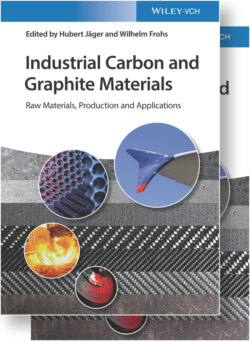Читать книгу Industrial Carbon and Graphite Materials - Группа авторов - Страница 15
1.4 Future Application of Carbon Materials
ОглавлениеTremendous future perspectives for carbon were forecasted with the discovery of nanoscaled new allotropes of carbon. Fullerenes were discovered in 1985 and became immediately a main research area in the field of carbon. The first Nobel Price was conferred in 1996 to H.W. Kroton, R.F. Curl, and R.E. Smalley for the discovery of fullerenes. The number of discussed potential applications reached from anti‐abrasive application to drug carrier in living organisms. None of the discussed applications were realized. The discovery of single‐wall nanotubes (SWCNT) and multiwall nanotubes (MWCNT) created new ideas in regard to their outstanding mechanical and electrical properties (Figure 1.31). SWCNT are still of academic interest only. MWCNT are industrialized in a few hundred ton scale and seem to find applications in functional polymers. The second Nobel Prize on carbon was granted to Konstantin Novoselov and André Geim for their work on graphene and its electrical properties. A very promising application of revolutionary impact in microelectronics may come from graphene sheets. Template‐grown graphenes are considered as very promising in this regard. The work of W. de Heer in this field was granted in 2011 by the SGL Carbon Group with the new established Utz‐Hellmuth Felcht Award.
Figure 1.30 Production capacities for redox flow batteries.
Figure 1.31 Mechanical strength from carbon fibers to nanotubes.
